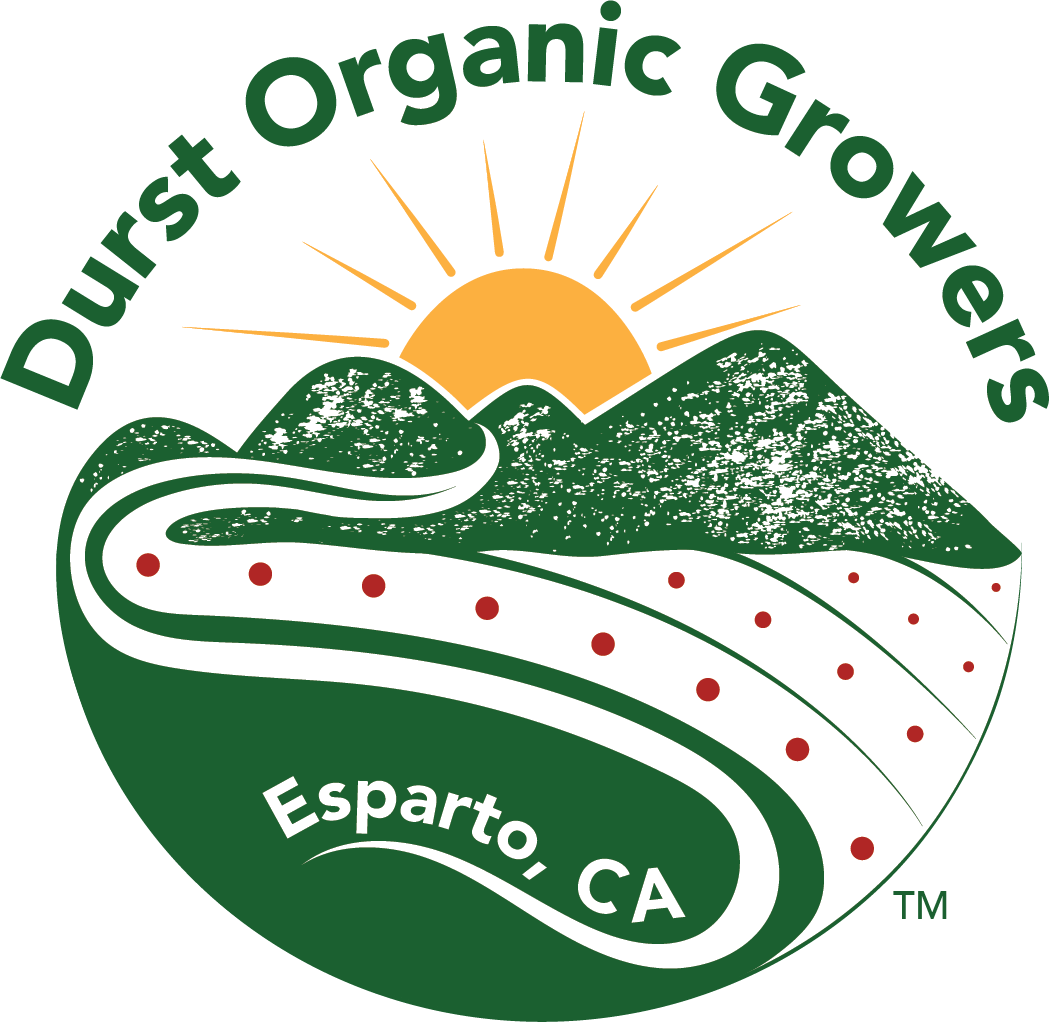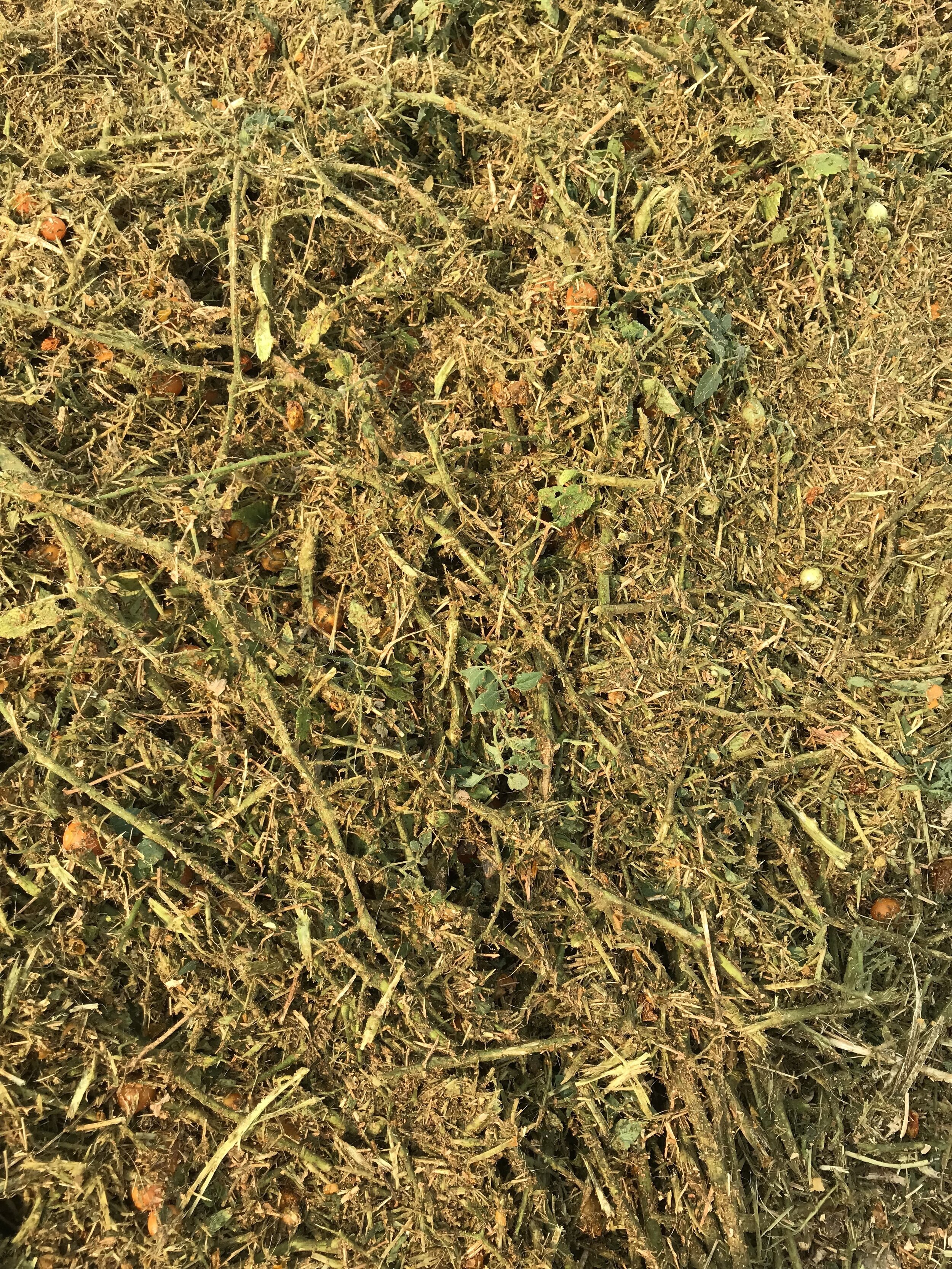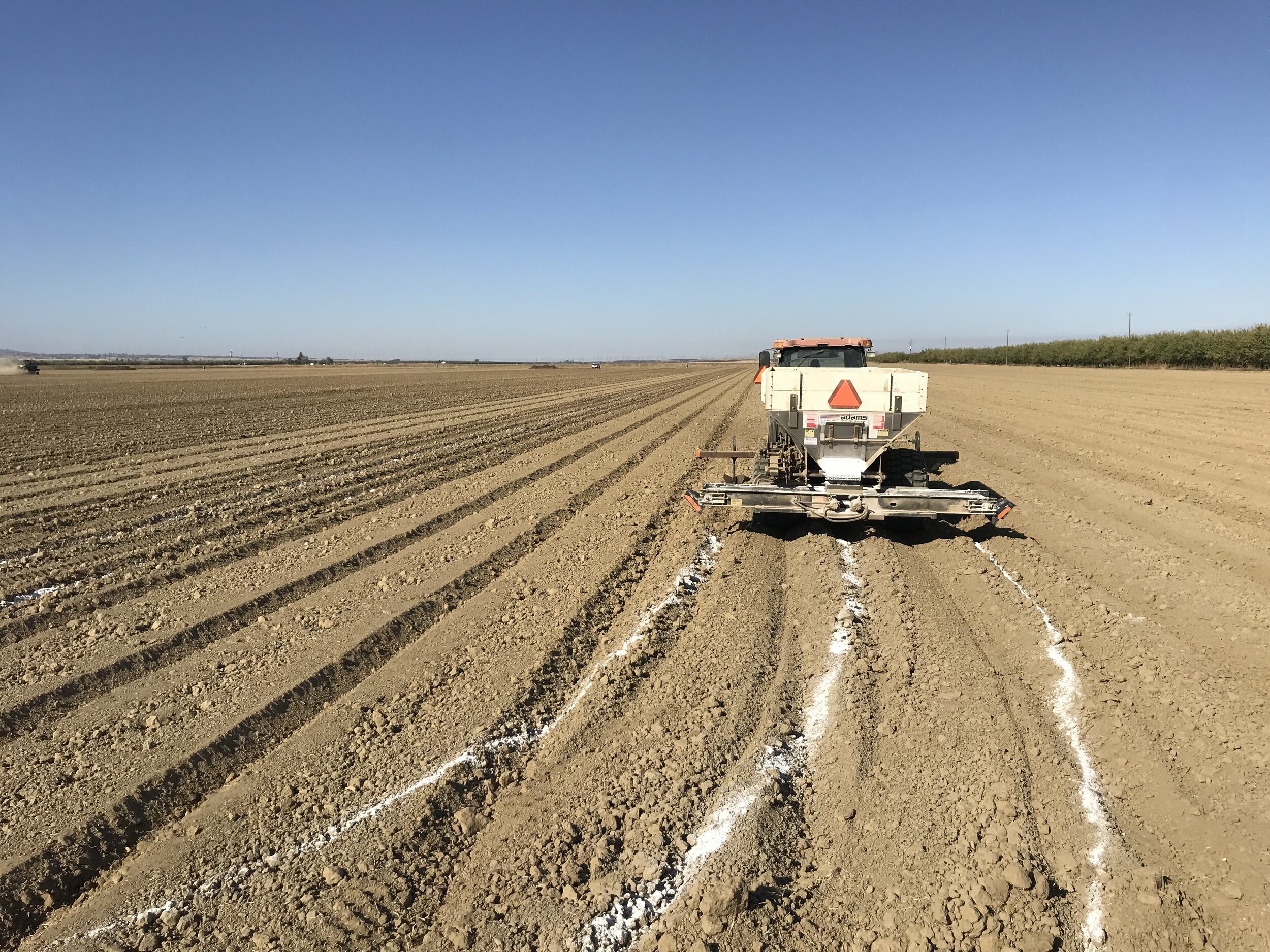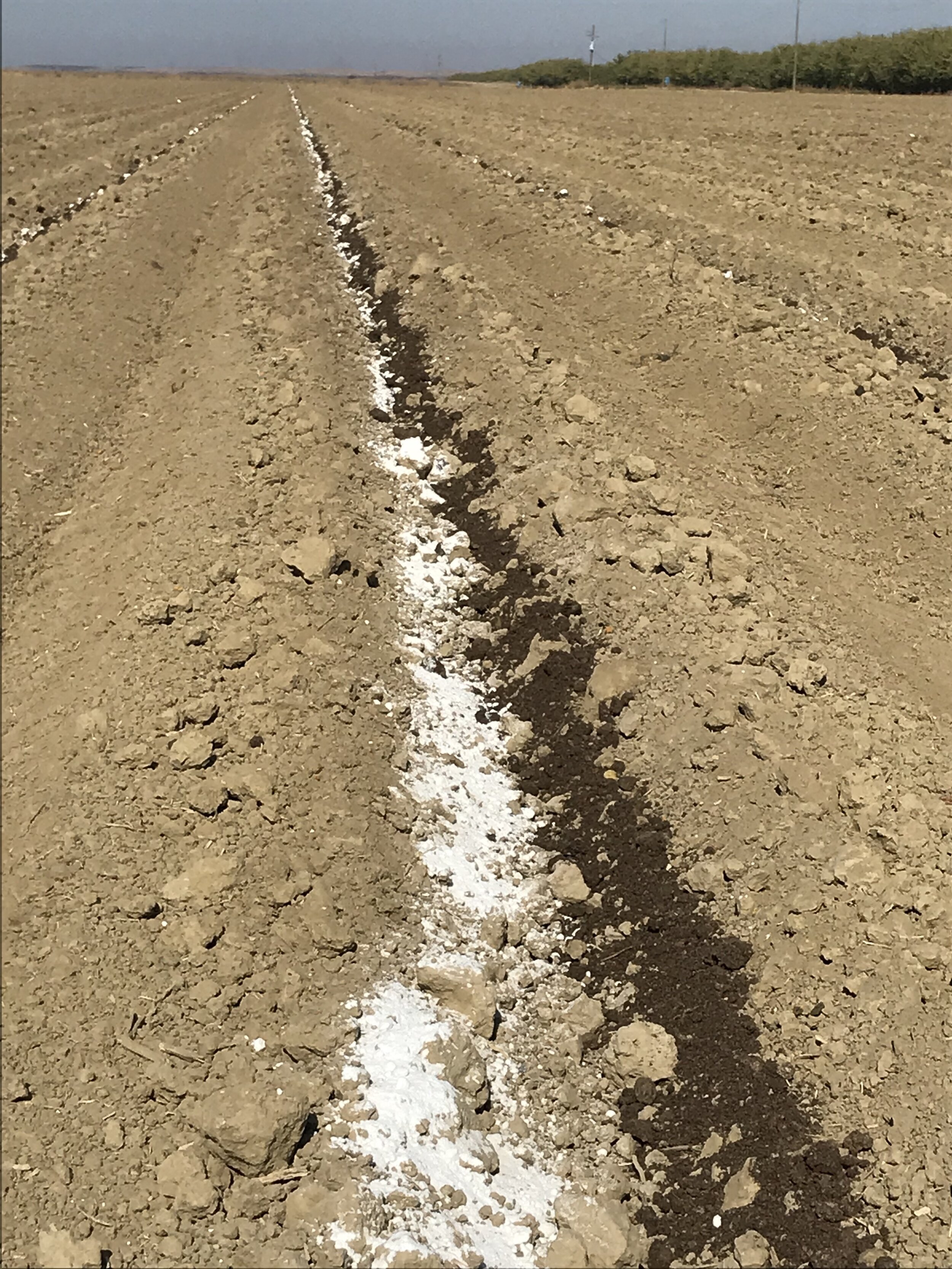The Dirt on Gypsum
If you know us, you know we are very committed to our soil health. It’s the foundation of the farm; it’s where our plants and hearts are rooted. By carefully managing our soils in a way that improves the soil health and structure, we are not only looking towards our yields, but we are looking towards the environment. In short, we believe in healthy soils not only for healthy plants and people, but also, on a bigger scale, for a healthy planet.
But, what does that mean on a practical level? How do we foster soil health in our daily operations?
What we do to encourage and build soil health depends on the season. In organic growing, it seems that you’re constantly considering the past while looking towards the future to inform what you do in the present (does that make sense?). For example: as we wrap up our summer harvest, we turn our focus to the process of returning the nutrients used to grow those delicious summer fruits back into the soil (and then some!), being mindful of additional materials our future crops will need.
The first step of that process is to chop down the spent plants and then work that plant material back into the soil; during the harvest season, fruit that isn’t saleable is also left in the field to return back to the soil. While this doesn’t replace all of the nutrients used during the growing cycle, of course, it does mimic the constant recycling of organic matter (carbon) that occurs in nature and feeds the microbial life that we so rely on.
Mowing down our first planting of tomatoes. What’s left behind (middle below) will be incorporated back into the soil, continuing the process of the carbon cycle.
Then come the amendments. The two main materials we add to our soils this time of year are compost and gypsum. For now, let’s focus on the gypsum, more on compost later.
Have you seen any piles of white material dotting the edges of farm fields lately? It’s gypsum! Usually, we get ours pre-mixed with our compost, but that service was not available this year.
Gypsum is a naturally occurring mineral that is high in both calcium and sulfur, both of which are essential nutrients for plants.
Though essential, calcium, along with magnesium and sulfur, is considered a “secondary” nutrient because it is needed in smaller quantities than The Big Three “primary” nutrients (nitrogen, phosphorus, and potassium – N,P,K), but don’t let that
“secondary” title fool you into thinking these minerals are any less vital to the plant’s growth and health. The primary function of calcium is to provide structural support to cell walls. That’s a big job!
When plants do not have enough calcium available to them, new growth (roots, leaves, shoots, fruit) will appear distorted due to improper cell wall formation. Additionally, calcium deficiency can cause blossoms and buds to drop, tip burn, and blossom end rot.
There are many ways to apply gypsum. At this time of year we apply it directly to the soil by “banding” it. Banding (vs. broadcasting) is a way of applying material in a concentrated “band,” typically in line with where the plants will go. To get more accuracy, and better utilize our product, we first shape our beds so that we know the materials are being banded exactly where next seasons plants will be planted. In fields that will be planted into grains (rather than row crops) next, we broadcast the gypsum, spreading it over the entire field. In the images below, from left to right, you see gypsum being picked up with a front loader to load it into the spreader, which is dropping the material in the middle image, and on the far right you see the gypsum and compost banded side-by-side onto the middle of a bed.
In addition to providing calcium in a way that is more available to plants than some other sources, gypsum is also thought to help improve soil structure for clay soils, which we have. It can increase both the soil’s ability to absorb and retain water, and improve the aeration and water percolation through the soil profile. Which brings us back to soil health for healthy plants AND a healthier planet. Applying gypsum to our fields at the end of our growing season is just one of the many tools in our toolbox for cultivating healthy soils (however our main interest in gypsum lies in it’s calcium availability - remember, “secondary” nutrients are just as important as the “primary” nutrients!).
Each of the tools we use here at Durst Organic Growers work together to help us best mimic natures cycles and processes so that we can achieve our goals of growing the best-tasting produce while working towards a healthier community and planet.
Questions about gypsum, or our farm? Leave a comment below, or send us an email!









